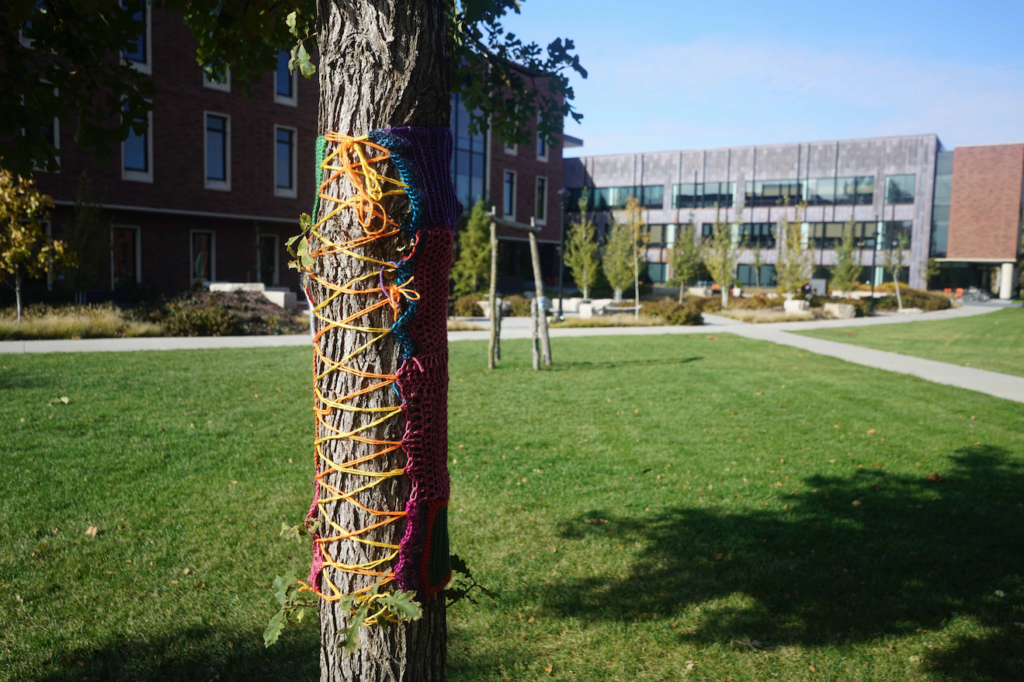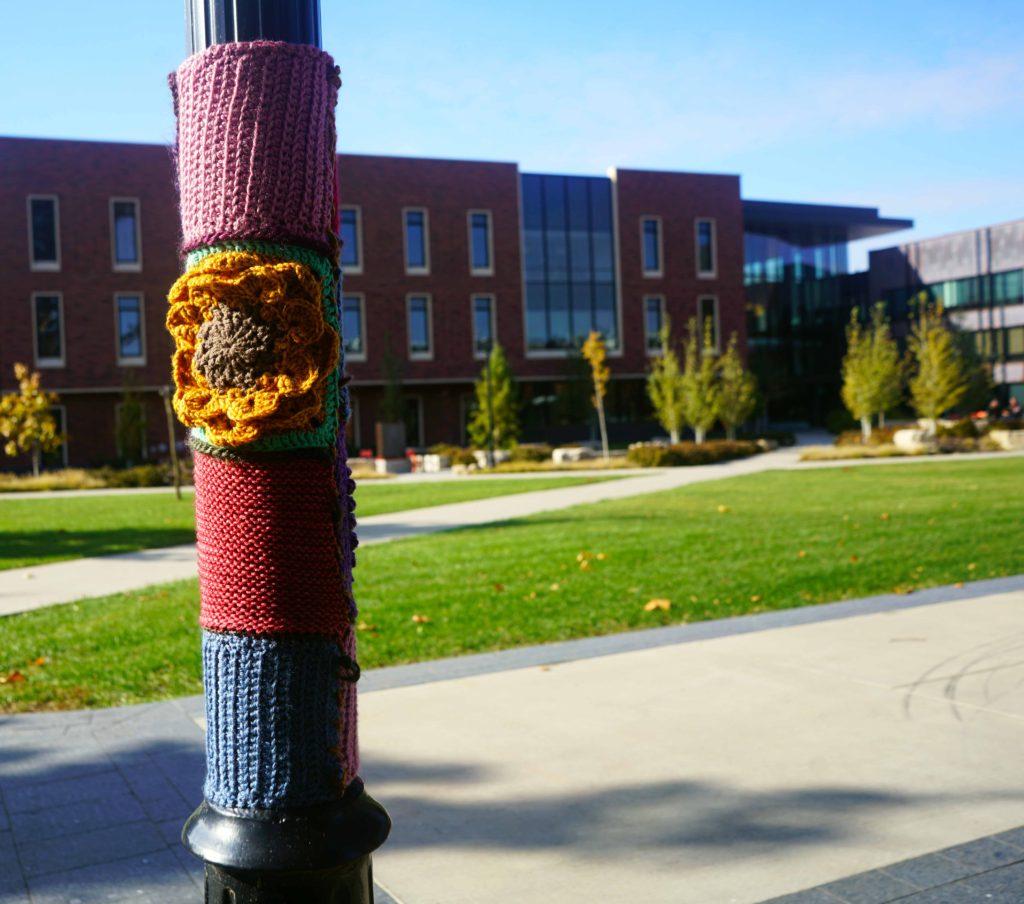Six students from the 2020 tutorial “The Art of Craft” joined their crocheting creations to yarnbomb three lampposts and a tree between Noyce Science Center and the Humanities and Social Studies Center.
Yarnbombing is a display of fiber art that brightens up a public space by covering an object with a crochet or knit artifact. Yarnbombing can be used as a form of protest or to bring awareness to the surrounding environment.
“Yarnbombing is a form of craftivism, which is frequently defined as a form of gentle protest as it takes something that is traditionally domestic or traditionally feminine and turns it into a subversive means,” said Phil Tyne `24 who was in “The Art of Craft” last year. “[It’s] not always protesting something but generally [brings] awareness to certain things or just changing the layout of an environment so that people pay attention.”
The students from the tutorial hoped that their crocheted squares would bring more color and character to the Grinnell campus.
“Our hope is more that it makes people happy because it’s quirky and cute to have little sweaters on the lamppost and just in general make people feel that they’re in a location that is tended to and cared for rather than just a manufactured lawn,” said Tyne.
The yarnbomb patterns were created during the tutorial last year and now that all the students are finally back together on campus they decided to hang up their creations.

“Dr. Snook, who was our professor, she bought this yarn and during the tutorial she sent it out to us. And we crocheted the squares during F1 when we had our tutorial.” said Tyne
Jax Seiler `22, who started knitting as a kid and is the President of the Fiber Arts Club on campus, was not involved with this yarnbombing event but is well aware of the purposes of yarnbombing.
“I’ve seen some as activism, which is super cool. I’ve seen the version — they’re like on a chain linked fence doing essentially a cross stitch to spell things out,” said Seiler.
Seiler has also seen yarn bombing used as an alternative to graffiti.
“[It] brighten[s] things up,” said Seiler. “[It] brings color in a fun way that is a little easier to remove than traditional graffiti”
This yarnbombing wasn’t as graffiti-like and independent as the students of “The Art of Craft” wanted. Rather than being surprising and unsolicited like other forms of street art, the students had to confer with Facilities Management (FM) before putting up their art.
“[The] whole thing of like getting permission from FM and a lot of stuff like that, which in a way ruins the spirit of yarnbombing because a lot of yarnbombing is anti-capitalist … anti-authority. But it sort of takes away the meaning of putting something up spontaneously if you have to get approval from someone, so that they don’t cut it down immediately,” said Tyne.
They don’t have plans to remove their yarnbombing from the tree and lampposts any time soon, but the removal may not be up to them.
“We don’t have rain forecasts in the future so I don’t think it should get wet or anything. It’s really up to if FM decides to cut it down,” said Tyne. “Hopefully they don’t because if they do I would want some of that back.”
























































